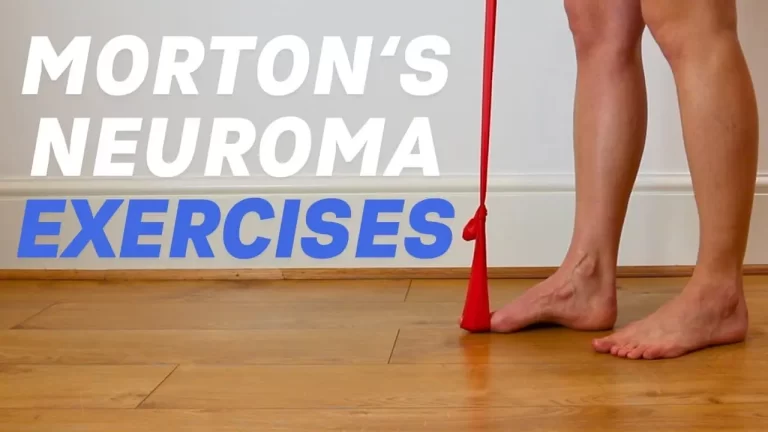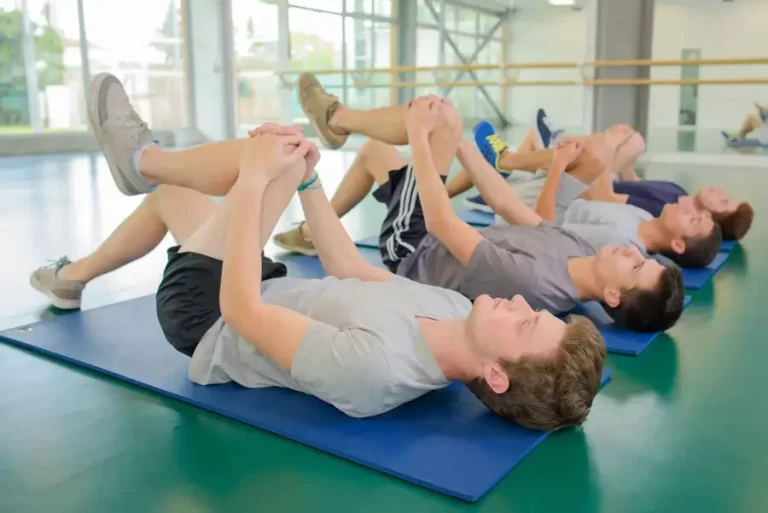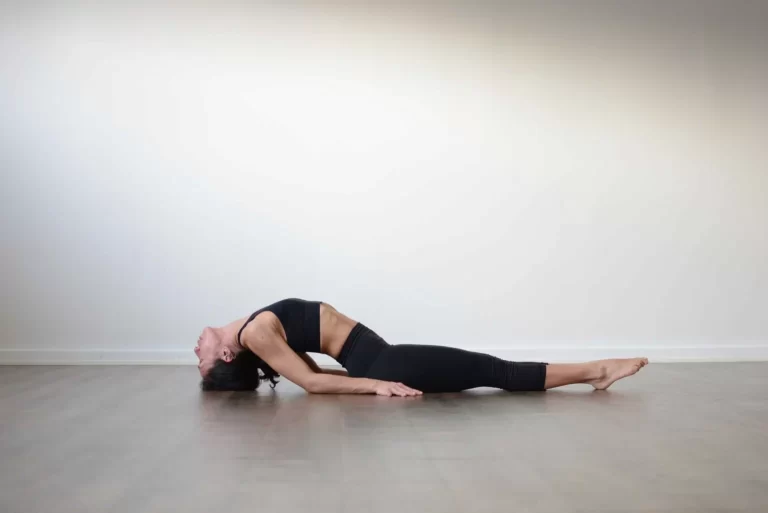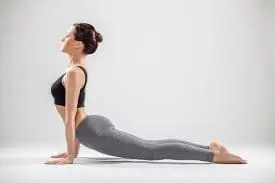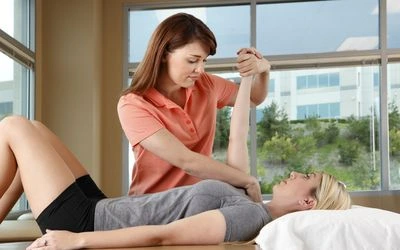15 Best Weight Bearing Exercises For Osteoporosis Of Spine
Weight-bearing exercises are crucial for managing osteoporosis of the spine, as they help maintain bone density and strengthen the supporting muscles. These exercises involve working against gravity while staying upright, promoting bone remodeling and reducing the risk of fractures.
Incorporating activities like walking, stair climbing, and strength training can enhance spinal health, improve balance, and support overall mobility. Always consult with a healthcare professional before starting a new exercise regimen, especially if you have osteoporosis.
Introduction:
Osteoporosis causes the density of bones to decrease, making them weaker and more inclined to break. Postural abnormalities, height loss, and vertebral fractures can all be serious issues caused by osteoporosis affecting the spine. Weight-bearing activities are one of the greatest ways to prevent osteoporosis of the spine since they help maintain or build
Bone density, maintain balance, along with improving overall spine health.
Osteoporosis can weaken the vertebrae in the spine, which increases the risk of fractures, particularly in the lumbar and thoracic areas.
For those with osteoporosis in this area of the body, strengthening the muscles supporting the spine is especially important. When exercising, people with osteoporosis in the spine should avoid certain motions and activities, such as high-impact exercises, activities that increase the risk of fractures, and forceful twisting movements.
Types of Weight-Bearing Exercises for Osteoporosis of the Spine:
All types of exercise require the body to support its weight, but selecting the right exercises is important, particularly for those with spinal osteoporosis. Some exercises are more suitable for people whose spine health is damaged.
Walking
One of the easiest and most effective weight-bearing activities for people with osteoporosis is walking. This low-impact exercise can help preserve bone mass, strengthen the heart, and improve balance. For those with osteoporosis, walking on flat ground or a treadmill is the best option because there is less chance of damage.
Strength Training (Resistance Exercises)
To develop muscles and bones, resistance exercises use weights or resistance bands. Exercises that target the spine and core muscles are vital for osteoporosis because they support the spine. Beginners should start with small weights, but as the muscles and bones get stronger, the intensity can be progressively increased.
Standing Exercises
Standing exercises support bone stability and strength, particularly in the lower body and spine. By encouraging the body to support its weight, these exercises help with balance and posture.
Water Aerobics
Water aerobics are low-impact workouts that are done in a swimming pool. For those with advanced osteoporosis or joint pain, the water’s gravity lowers the chance of straining the bones and joints. By promoting muscle strength and endurance, water aerobics could improve general bone health even though they aren’t often weight-bearing.
Tai Chi
Tai Chi is a mild workout that involves deep breathing and slow, intentional motions. Although not a conventional weight-bearing exercise, the slow, controlled movements help to increase core strength, flexibility, and balance all of which are essential for lowering the risk of fractures and falls. Additionally, tai chi strengthens the muscles that support the spine, improving spinal health.
Pilates and yoga
Strength, flexibility, and balance are the main goals of yoga and Pilates. Certain positions may improve posture, increase flexibility, and strengthen the muscles that support the spine. However, because they may cause unnecessary strain on the spine, several positions that require a lot of twisting or forward bending should be avoided.
Benefits of Exercise:
For those with osteoporosis, weight-bearing exercises are essential, especially if the illness affects the spine. These types of exercise are essential for improving quality of life, avoiding additional bone breakdown, and increasing general bone health.
Here are some more details on the main advantages of weight-bearing activities for treating spinal osteoporosis:
- Bone Density Increase
One of the best methods to promote bone formation is to engage in weight-bearing activities. These workouts improve bone density by activating osteoblasts, or bone-forming cells, by putting pressure or strain on the bones. For those who have osteoporosis, this is particularly important because it can delay the disease’s course and possibly stop additional bone loss in the spine.
- Lowering the Chance of Fractures
As osteoporosis weakens bones, people are more likely to fracture, particularly in the wrists, hips, and spine. Bones can be strengthened by weight-bearing activities, increasing their capacity to endure everyday stresses. Strengthened supporting muscles and increased bone density help avoid fractures from falls and even small movements.
- Better Spinal Alignment and Posture
Vertebral fractures caused by osteoporosis can cause postural abnormalities including kyphosis, or a rounded, stooped back. Weight-bearing exercises help maintain suitable spinal alignment and stop the spine from becoming more curved by strengthening the muscles in the back, abdomen, and core. This lessens the strain on weaker vertebrae and the pain caused by bad posture.
- Increased Mobility and Flexibility
The spine and other joints may become stiff and have a reduced range of motion as a result of osteoporosis. Yoga and Pilates, two weight-bearing exercises that combine flexibility and stretching, can help improve flexibility, which will make daily tasks easier and lower the chance of painful joints and muscle tightness.
- Pain Control
Spinal osteoporosis frequently results in muscle strain and pain from vertebral fractures. By strengthening the muscles that support the spine, increasing circulation, and decreasing inflammation, weight-bearing activities help to relieve this pain. Additionally, these workouts promote the body’s natural pain-relieving hormones, endorphins, to be released.
- Improved Coordination and Balance
Balance and coordination can also be improved by weight-bearing activities that require mobility, including walking, tai chi, or standing strength training. The risk of falls rises when osteoporosis weakens the bones and muscles. Balance-focused exercises, including heel-to-toe walking or standing leg lifts, increase stability and make it simpler to go about daily tasks without worrying about falling.
- Better Quality of Life and Increased Independence
Weight-bearing exercises help people with osteoporosis stay independent for longer by improving their muscle strength, flexibility, and balance. People’s quality of life can be significantly improved when they can keep their mobility and functionality since they are less dependent on others for everyday tasks.
- Stopping Future Bone Loss
People with osteoporosis can help stop additional bone loss by including weight-bearing exercises in their regular fitness routine. By encouraging the retention of calcium and other minerals in the bones and stimulating bone turnover, these workouts support the preservation of bone mass and health.
- Supports Weight Control
People with osteoporosis should maintain a healthy weight since being overweight might strain their bones and joints more. Exercises involving weight bearing can be a useful strategy for controlling body weight since they promote calorie burning and the development of lean muscle mass.
- Improved Mood and Mental Wellbeing
Exercise in general, and weight-bearing exercises in particular, are known to improve mental health. It has been proven that regular exercise helps those who are struggling with chronic illnesses like osteoporosis feel less stressed, depressed, and anxious.
Weight Bearing Exercises For Osteoporosis Of Spine:
Walking
One of the best ways to treat osteoporosis in the spine is to walk. Over time, it helps to maintain bone density, increase flexibility, and improve your general quality of life. It’s easy to include in your routine.
- Start with quick walks (ten to fifteen minutes) a few times a week if you’ve never exercised before or haven’t been active in a long time.
- Increase the frequency and length gradually as you feel more comfortable.
- When walking, maintain a straight back and refrain from hunching over.
- To support your spine, concentrate on maintaining a stable, upright posture.
- To minimize the effects of every step, choose shoes that are supportive and cushioned.
- Increase the intensity by walking quickly for 20 to 30 minutes most days of the week until you feel comfortable doing so.
- To increase the advantages and add variation, you can also use small inclines, such as walking uphill or using a treadmill with an incline setting.
- Short breaks are allowed if necessary.
- Being constant and progressively increasing your stamina over time is the aim.
- Try to walk for at least half an hour every day, five days a week.
- Maintaining bone health and preventing additional bone loss requires regularity.
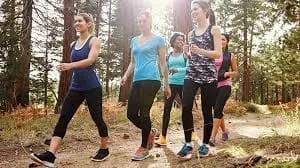
Seated Row with Resistance Bands
- With your legs straight out in front of you, take a seat on the floor.
- Attach the resistance band to a door or another sturdy object in front of you, or loop it around your feet.
- With your arms out in front of you, hold one end of the resistance band in each hand, palms facing one another.
- To protect your spine, maintain a straight back and use your core.
- Maintain a relaxed posture and keep your shoulders away from your ears.
- Keeping your elbows close to your sides, slowly pull the bands toward your body.
- As you row, concentrate on squeezing your back muscles by squeezing your shoulder blades together.
- Your elbows should be bent at a 90-degree angle as your hands approach your body, right under your ribs.
- Hold this position for a few seconds.
- Then let the resistance band expand before carefully returning to the beginning position under control.
- Then relax.
- Repeat this exercise five to ten times.
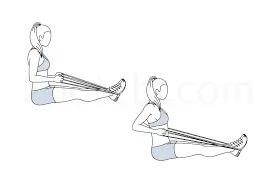
Chair Squats
- You should stand with your feet shoulder-width apart and your toes pointed slightly outward.
- Make sure the chair behind you is stable and won’t move while you’re performing the workout.
- For balance, keep your arms out in front of you or rest them on your hips.
- Maintain a straight spine, shoulders back, and a raised chest.
- Maintaining your knees in line with your toes (don’t let them buckle) as you slowly push your hips back as though you were going to sit on the chair.
- While maintaining a straight back and an elevated chest, bend your knees and hips to lower yourself.
- When you squat, be sure your knees don’t go past your toes.
- Don’t sit down; instead, lower yourself until your glutes lightly tap the chair.
- To get back up, push through your heels rather than your toes.
- Return to a completely upright position by pulling your hips forward and straightening your legs.
- As you rise, make sure to use your quadriceps and glutes.
- Then relax.
- Repeat this exercise five to ten times.
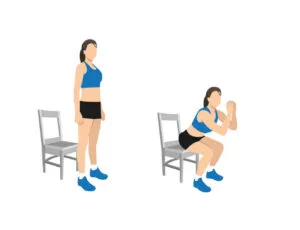
Seated Hamstring Stretch
- With your back straight and your feet flat on the floor, take a seat on the edge of a supportive chair.
- Maintain a comfortable posture with your shoulders and an active core.
- With your toes pointing upward and your heel on the ground, extend one leg straight out in front of you.
- Maintain the foot flat on the ground and the other leg bent.
- Though not locked at the knee, your extended leg should be straight.
- For support, place your hands on your thighs or hips.
- The hamstrings at the back of your extended leg should feel a little stretched.
- The stretch should feel mild to moderate; don’t push it.
- Lean over your outstretched leg and slowly tilt forward at the hips (not the waist) while maintaining a straight back.
- Instead of bending from the waist, imagine reaching your chest toward your extended leg.
- Keep your extended leg’s knee straight, but do not lock it.
- Hold this position for a few seconds.
- Return to an upright posture gradually.
- Then relax.
- Repeat this exercise five to ten times.
- Do the same with the other leg.
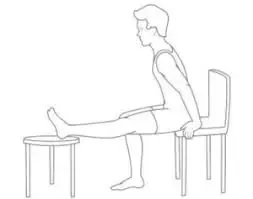
Cat-Cow Stretch
- Start with your knees behind your hips and your hands directly beneath your shoulders, making a tabletop position on all fours.
- To improve stability, spread your fingers wide and maintain shoulder-to-wrist alignment.
- Maintain the natural curvature of your back and a neutral spine.
- Look at the floor with your head aligned with your spine.
- Start by slowly rounding your spine upward toward the ceiling while breathing.
- Imagine tucking your pelvis down and pushing the middle of your back toward the sky.
- Look at your belly button while lowering your head toward your chest.
- Make sure you’re not overarching or putting excessive strain on your lower back by using your abdominal muscles to help with the action.
- As you gently reverse the motion, arch your back and lower your tummy toward the floor, take a breath.
- Without putting excessive pressure on your neck, raise your head and chest and look forward or slightly upward.
- Make your lower back curve deeply by lowering your tailbone toward the floor.
- Keep switching between Cat and Cow positions gently and easily, coordinating your breathing with each posture.
- Breathe in as you arch your back into Cow and out as you circle your spine into Cat.
- Then relax.
- Repeat this exercise five to ten times.
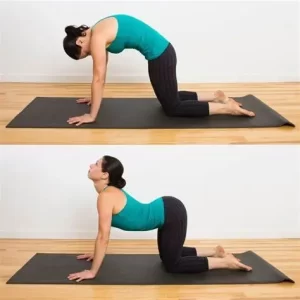
Wall Push-Up
- Your feet should be shoulder-width apart as you face the wall.
- Straighten your arms in front of you and place your hands flat on the wall at chest height.
- Spreading your fingers wide will improve stability.
- While keeping your spine neutral that is, without arching or rounding walk your feet back a little to form a straight line from your head to your heels.
- Maintain a straight body alignment from head to heels during the exercise by using your core muscles.
- Keep your chest open and your elbows slightly bent.
- With your feet placed firmly, place your hands either just beneath your shoulders or a little broader.
- Lower your chest toward the wall while slowly bending your elbows.
- As you lower, maintain your elbows at a 45-degree angle from your body.
- Your body should move as a single unit without causing your hips to lift or your lower back to sag.
- As you lower your body toward the wall, take a breath.
- Make sure your chest is only a few inches from the wall, or as low as your range of motion allows.
- As you reach the highest point, maintain a gentle, not locked, elbow position.
- Straighten your arms and push through your hands to raise your body back to the beginning position.
- As you push yourself back up to standing, release your breath.
- Then relax.
- Repeat this exercise five to ten times.
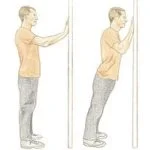
Mountain Pose
- With your toes pointed forward and your feet together (or hip-width apart for extra stability), take a tall position.
- Make sure both of your feet are securely planted on the ground and divide your weight equally between them.
- You can increase your balance by slightly separating your feet if needed.
- Lift your thighs a little to engage them, then feel the energy move up into your core from your legs.
- Stand tall and pull your pelvis under lightly (imagine a tiny, neutral pelvic tilt) to lengthen your spine.
- Make sure your shoulders are lowered and pulled back from your ears as you raise your chest overhead.
- Refrain from overly arching your back.
- Pull your belly button slightly toward your spine to activate your core and provide more stability.
- Your spine will lengthen if you visualize an object that is fastened to the top of your head and slowly pulls you higher.
- With your palms facing front, let your arms rest loosely by your sides.
- Spread your fingers wide.
- Alternatively, depending on how comfortable you are, you can turn your palms either forward or toward each other.
- Your chin should be parallel to the floor, and your neck should be long and relaxed.
- To keep your neck aligned, keep your eyes relaxed and either look straight ahead or slightly downward.
- Maintain the posture for a few seconds or more while concentrating on taking slow, deep breaths.
- Exhale via your mouth or nose after taking a deep breath through your nose that allows your lungs to fill.
- Keep your posture stable and your body engaged and active at all times.
- Just take a few moments to stand in a neutral stance and relax your arms to exit the pose.
- Then relax.
- Repeat this exercise five to ten times.
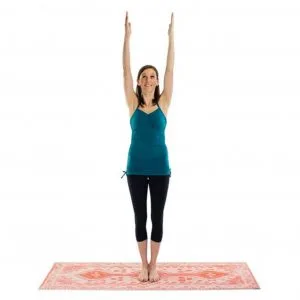
Pelvic Tilts
- With your knees bent and your feet flat on the floor, lie on your back on a level surface.
- You should have your arms at your sides, relaxed, palms down.
- Maintain a neutral spine alignment and space your feet about hip-width apart. There should be a tiny space between your lower back and the floor, and your lower back should naturally curve slightly.
- Take a deep breath to get ready, then release it as you tilt your pelvis upward and gently flatten your lower back into the floor.
- Tighten your abdominal muscles and pull your pelvis gently (think of it as pointing your tailbone toward the floor) to do this.
- Your pelvis should shift slightly as it approaches a neutral posture.
- Avoid pushing yourself into the exercise with your arms or legs; instead, keep your upper body relaxed.
- Breathe in as you slowly move back to the beginning position, allowing your lower back to arch just a little bit off the ground.
- Relax your abdominal muscles and keep your spine in its natural bend.
- Then relax.
- Repeat this exercise five to ten times.
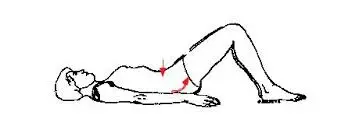
Standing Leg Raises
- Stand upright with your feet hip-width wide.
- Make sure your shoulders are back, your core is active, and your posture is straight.
- For support and balance, place one hand on the back of a solid wall, counter, or chair.
- Your other hand might rest at your side or be used on your hip.
- Maintaining a straight knee and forward-pointing toes, slowly raise one leg straight out to the side.
- Keep your foot from turning outward.
- As you raise your leg, contract your hip muscles and core, keeping your standing leg slightly bent for stability.
- Lift the leg as far off the ground as is comfortable for you; try to get it between 8 and 12 inches.
- Avoid straining or overextending.
- For two to three seconds, hold the raised leg in place, paying attention to maintaining a tall posture and an active core.
- Use your supporting hand and provide light pressure through your standing leg to keep your balance.
- Controllably return your raised leg to the beginning position slowly.
- Refrain from dropping the leg too soon.
- To get the most muscular engagement, move slowly and gradually.
- Then relax.
- Repeat this exercise five to ten times.
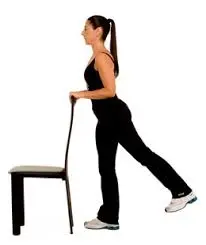
Single leg balance
- Stand up straight up and place your feet hip-width away.
- Make sure your shoulders are back, your chest is raised, and your core is carefully engaged in an upright position.
- For support, place your hands on a wall, counter, or strong chair (optional), particularly if you are worried about your balance.
- Bend your knee to a nearly 90-degree angle and slowly raise one foot off the ground.
- For increased stability, keep your standing leg slightly bent.
- Avoid tilting to one side and concentrate on using your core muscles.
- Avoid arching or slumping your lower back and maintain a straight back.
- Depending on how comfortable and balanced you are, try holding the position for a few seconds.
- Keep your hips level during the hold, and use your core for further stability.
- As you get stronger at balancing, try to progressively lessen the dependence on support if you’re using it.
- As you slowly and deliberately descend your lifted leg back to the floor, you are maintaining control.
- Get back to standing and get ready to switch legs.
- Then relax.
- Repeat this exercise five to ten times.
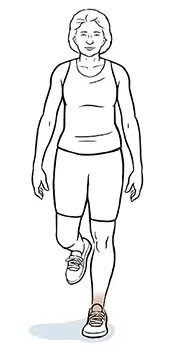
Side Leg Raises
The muscles surrounding the hips and lower back can be strengthened by side leg lifts. Balance improves and the spine is protected by stronger hips and glutes.
- Maintaining your legs placed on top of one another, lie on your side on a level surface.
- You can put a little pillow under your head for comfort or rest your head on your lower arm for support.
- Stay away from twisting or tilting and maintain a straight body from head to toe.
- To help with alignment, lay your top hand on your hip or bend your lower arm and place it in front of you.
- For support, keep your lower leg bent; if it seems comfortable, you can lengthen it.
- Maintaining a straight but not locked leg, flex your top leg until your toes point forward or slightly downward.
- To keep your body stable, use your core.
- Lift your upper leg slowly up toward the ceiling, aiming at a 45-degree angle, or as close as it feels comfortable.
- Maintain a straight leg with your toes pointed front.
- Instead of depending on progress, concentrate on lifting your leg with the muscles in your thighs and outer hip.
- Hold the position for two to three seconds once your leg reaches the correct height, making sure your body stays still and your hips stay in alignment. Return to the beginning position by lowering your leg slowly and gradually.
- Don’t lower your leg too soon.
- Then relax.
- Repeat this exercise five to ten times.
- Repeat the exercise for the same number of repetitions after finishing one side.
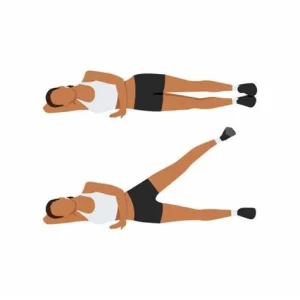
Step-Ups
Step-ups are an excellent weight-bearing exercise that improves cardiovascular fitness and strengthens the legs, hips, and core. Posture and stability can be improved with this workout.
- Place your feet hip-width apart and face the step or bench in an upright posture.
- For extra balance, rest your hands on your hips or, if needed, hold to a wall or chair.
- Maintain a straight back, shoulders back, and an active core.
- Using your right foot, step onto the platform and push through the heel to raise your body.
- Move your left foot up to meet your right foot on the platform as you step up, straightening your right leg.
- Step your left foot down to the floor after lowering your right foot slowly.
- Avoid jerking during the slide and concentrate on keeping control.
- Then relax.
- Repeat this exercise five to ten times.
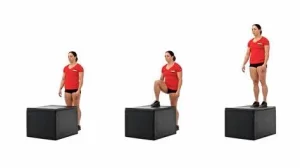
Heel-to-Toe Walking
- Take an upright posture with your feet hip-width apart.
- Keep your shoulders back, your core strong, and your posture straight.
- Throughout the workout, concentrate on keeping your alignment correct.
- Step forward with your right foot slowly.
- While doing this, position your right foot’s heel firmly in front of your left foot’s toes.
- Try for a straight toe line and make sure your heel maintains the ground first.
- Place your left heel properly in front of your right toes as you advance with your left foot.
- Continue walking slowly in this “heel-to-toe” rhythm.
- As you move, concentrate on maintaining your body’s height and alignment.
- To help stabilize your posture, contract your core.
- If you’re new to balance exercises, you might want to start using a wall or other significant object for balance.
- Then relax.
- Repeat this exercise five to ten times.
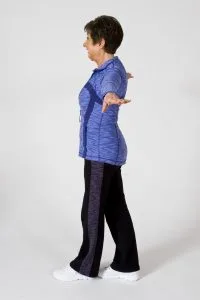
Bridges
- Place your feet flat on the floor, hip-width apart, and bend your knees while lying on your back on a level surface.
- With your hands facing down, place your arms at your sides.
- Maintain the alignment of your head, neck, and spine.
- Make sure your lower back has a slight natural curvature.
- To get ready for the exercise, gently contract your abdominal muscles and squeeze your glutes (buttocks).
- Maintain a level foot and hip-to-knee alignment.
- As you get ready, take a deep breath.
- Press through your heels to slowly raise your hips toward the ceiling as you release your breath.
- Keep your body straight and concentrate on raising your lower back and pelvis.
- To ensure that your knees, hips, and shoulders make a straight line at the top of the exercise, squeeze your glutes as you raise your hips.
- Don’t push your tummy outward or arch your back too much.
- To keep your spine safe, maintain an active core.
- Keep your core active and your glutes tightened while you hold the bridge posture for two to five seconds at the peak.
- Make sure your body stays in a straight line from your shoulders to your knees and avoid overextending your lower back.
- Taking a breath, slowly return your hips to the beginning position while keeping your movement under control.
- Don’t let your hips drop too soon, and maintain a neutral spine.
- Then relax.
- Repeat this exercise five to ten times.
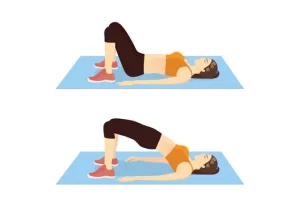
Water Aerobics
Water aerobics is a low-impact, joint-friendly workout that offers resistance. Water aerobics, which are not often weight-bearing, improve cardiovascular health and general muscle strength, both of which support bone health.
- Participate in water-based activities such as leg lifts, marching, or mild swimming in a pool, or participate in a water aerobics class.
- Two to three times a week, try to get in 30 minutes of water aerobics.

What safety measures should be followed when working out?
When exercising with osteoporosis of the spine, care must be taken to avoid damage and make sure the workouts are good for you rather than bad for you. Exercises involving weight bearing may significantly improve bone health, strength, and posture, but they must be performed carefully and with the right form.
The following are the main precautions to take when performing weight-bearing activities for spinal osteoporosis:
- Talk to Your Healthcare Professional
It’s important to speak with your doctor before beginning any workout program, especially if you have osteoporosis or another medical condition. Depending on how serious your disease is, your healthcare professional may analyze your particular requirements, suggest suitable activities, and help with choosing which exercises you should avoid.
- Begin slowly and make progress over time.
It’s important to take your time with intense workouts, particularly if you’ve been inactive for a long time or are new to weight-bearing activities. As your strength and bone density increase, start with low-impact workouts and progressively increase their duration, complexity, and intensity. Unnecessary strain on your spine might result from sudden increases in activity.
- Don’t Overstretch
Although stretching can help develop flexibility, it’s important to avoid overstretching as this raises the possibility of injury or muscle strain. Stretch your muscles gently without applying too much force.
- Make Use of the Correct Form and Technique
When performing workouts, it’s essential to maintain good form and posture to prevent strain on the spine. Incorrect methods, including rounding the back when performing workouts, can raise the possibility of vertebral compression fractures.
- Get enough sleep and stay hydrated.
Both general health and muscle function depend on enough hydration. Muscle cramps or tiredness caused by dehydration may make injuries more likely. Furthermore, getting enough sleep is important for avoiding overuse injuries.
- Stay away from jarring and high-impact movements.
People with osteoporosis may be more at risk for fractures if they engage in high-impact activities like running, jumping, or heavy lifting. These exercises overstress already weak bones, particularly the spine. Limit your exercise to low-impact weight-bearing activities like walking or mild strength training.
- Put on the correct Shoes.
For stability and balance when performing weight-bearing workouts, suitable footwear is essential. To lower the chance of falls and ensure proper alignment when performing exercises like walking, standing leg lifts, or strength training, choose shoes that provide enough arch support and cushioning.
- Ask for Help When You Need It
You might need to use a wall, chair, or other support for some exercises, especially strength training or balancing exercises, to maintain the proper form and stability. Always make sure you have a solid object to grasp for support when performing standing exercises or balancing tasks, particularly if you run the danger of falling.
- Avoid Twisting Movements
Twisting motions, such as those performed during some yoga poses or certain sports activities, can place excessive strain on the spine and increase the risk of injury in people with osteoporosis. Avoid exercises that require you to twist your spine or bend forward too much.
- Concentrate on Core Muscle Strengthening Exercises
Your back, abdominal, and core muscles are among the muscles that surround your spine and give it essential support. By strengthening these muscles, you can lower your chance of vertebral fractures, and avoid back pain, while improving your posture. Core strengthening exercises like modified planks, bridges, and pelvic tilts work well.
- Pay Attention to Your Body
During exercising, be mindful of any pain or difficulty. Stop the exercise right once and speak with your healthcare physician if you experience any severe pain, especially in your spine. When beginning a new training program, mild pain is common, but pain shouldn’t be ignored.
- Think About Working with a Physical Therapist
Depending on your unique needs, skills, and the degree of your osteoporosis, a physical therapist can create a safe and customized exercise program. A specialist may recommend adjustments, teach you the correct form, and guarantee that the exercises are both secure and effective.
When should you stop working out?
It’s important to pay attention to your body and identify when you should reduce or alter your weight-bearing workouts, especially while treating osteoporosis of the spine. Although bone health can benefit from exercise, pushing through pain, overexertion, or poor technique can have the opposite effect.
The following are some important symptoms and conditions that indicate you should stop exercising:
- Severe or Sharp Pain
You should stop doing any exercise right once if you feel sudden, severe pain, especially in your back or spine. This may be a sign that you are overstressing your muscles or bones, which can cause harm or even fractures in people who have osteoporosis. As an example, it’s critical to pause and evaluate the situation if you experience unexpected pain when engaging in weight-bearing activities like walking, strength training, or balance exercises.
- Feeling sick or uncomfortable
It’s important to stop exercising if you experience nausea, illness, or unusual feelings of exhaustion. These symptoms could suggest that you are not fully recovered from your workout or that your body is under stress.
- Lightheadedness or dizziness
Spinal osteoporosis can occasionally affect posture and balance, which raises the possibility of falls while exercising. It’s important to end the workout right away if you experience lightheadedness or dizziness. Dehydration, weakness, or sudden shifts in position can all produce dizziness, which can result in falls or other accidents.
- Tingling or numbness
Nerve compression or other spinal problems may be indicated by numbness or tingling in the limbs, especially in the arms or legs. These feelings might suggest that your spine or nerves are being overstressed by the workout.
- Excessive Weakness or Fatigue
You may be overexerting yourself if you experience unexpected tiredness or weakness when exercising. Fatigue, strained muscles, and a higher chance of falling can result from overexertion. In people with osteoporosis, where excessive strain on bones or muscles might result in injury, this is especially worrying.
- Having Trouble Breathing
Breathing difficulties or shortness of breath while exercising could be a sign that you’re exerting yourself too much or that you have further health issues. Breathing correctly is important when performing weight-bearing workouts, and being out of breath may indicate that your muscles aren’t receiving enough oxygen.
- Unable to Maintain Correct Form
When conducting weight-bearing exercises, proper technique and posture are essential, particularly when dealing with osteoporosis of the spine. Exercises that focus on the legs, back, or core may put you at higher risk for injury, including spinal fractures if you begin to lose form.
- Loss of Coordination or Balance
Fall risk can be increased by osteoporosis, particularly when engaging in weight-bearing activities that require balance, such as walking or standing leg lifts. It may indicate that you are overdoing the exercises or that your spine is not receiving enough support if you start to lose your balance or feel uncoordinated.
- Bruising or Swelling
Following exercise, any bruising or swelling around the joints or spine could be a sign of strain or injury. Overstretching muscles or even little tears in the muscles supporting the spine can cause swelling.
If you have osteoporosis of the spine, which workouts should you avoid?
Certain exercises might cause excessive strain on your bones and raise your risk of fractures if you have osteoporosis of the spine. Activities that might require twisting, extreme forward bending, or high-impact movements should be avoided.
In general, you should stay away from the following exercises:
- High-impact workouts
Based on the strain on the spine, running, jumping, and sports involving sudden stops and starts (like basketball and tennis) might raise the risk of fractures.
- Twisting motions
As they might cause stress on the bones, activities that twist or rotate the spine such as some yoga postures should be avoided.
- Leaning forward (flexion)
Activities like toe touches, forward-bending yoga positions, and sit-ups can be dangerous because they raise the risk of compression fractures in the spine.
- Heavy lifting of weights
Heavy lifting can put a strain on your spine and raise your risk of compression fractures, especially when done above or on your back.
- Physically demanding sports
Sports that require rapid or violent movements, such as martial arts or skiing, should be avoided to reduce the chance of falls and injuries.
Summary:
One effective strategy for treating osteoporosis of the spine is weight-bearing activities. Walking, weight training, yoga, or other suitable exercises regularly can help maintain bone density, improve general spinal health, improve posture, and lessen pain.
Combining strengthening and flexibility exercises can help people with osteoporosis. They should, however, stay away from anything that puts them at risk of falling, such as sudden movements and strong twisting.
To make sure a fitness program is safe for your condition, always remember to speak with a healthcare provider before starting. Weight-bearing activities can lower the risks of osteoporosis of the spine and improve quality of life if done properly.
FAQ:
Can someone with osteoporosis of the spine exercise?
Exercise is really helpful for those who have osteoporosis in their spines. In addition to strengthening muscles and improving balance, it can help increase bone density and lower the risk of fractures. However, you must stay away from high-impact activities that can strain your spine and select exercises that are safe for your condition.
What kinds of physical activities are safe for people with osteoporosis of the spine?
Exercises involving weight bearing include walking, standing, and resistance training using resistance bands or small weights.
Strength training: focused on bolstering the muscles that support the legs, hips, and spine.
Exercises for balance: To enhance coordination and prevent falls (e.g., standing on one leg, heel-to-toe walking).
Yoga poses and mild stretching that supports spine health without going overboard are examples of flexibility exercises.
If I have osteoporosis of the spine, are there some workouts I should avoid?
To prevent injuries, some workouts should be avoided or changed.
High-impact exercises that raise the risk of fractures include running, jumping, and heavy lifting.
Twisting motions: Exercises that cause the spine to twist excessively, such as contact sports or some yoga positions.
Deep forward bending: The spine may be overworked by exercises like sit-ups and toe-touching.
Avoid lifting heavy weights without the right equipment or supervision, especially when doing so overhead.
How frequently should I work out if I have spinal osteoporosis?
It is advised that most people with osteoporosis try to get in at least 30 minutes of activity most days of the week. Particularly if you’re just beginning out, this can be divided into shorter periods (e.g., 10 to 15 minutes at a time). The goal is to combine strength training, balancing work, and weight-bearing activities.
Is osteoporosis of the spine reversible by exercise?
Exercise can help preserve bone density and moderate the rate of bone loss, but it cannot completely reverse osteoporosis. Additionally, it improves posture and lowers the chance of fractures by strengthening the muscles surrounding the spine. Frequent exercise can greatly enhance quality of life and stop additional bone loss when combined with healthy eating and medical care.
During exercising, what if I feel pain?
Pain must not be ignored. Stop exercising right now and take a break if you feel any kind of sharp, intense, or uncomfortable pain. It’s common to feel a little sore after working out, but if the pain continues or gets worse, talk to your doctor or a physical therapist about changing your routine or activities.
If I have severe osteoporosis or a spinal fracture, is it safe to engage in weight-bearing exercise?
Before beginning or continuing any fitness program, you must speak with a physician or physical therapist if you currently have a spine fracture or if your osteoporosis is severe. To make sure you don’t worsen your illness or run the danger of getting more fractures, they will evaluate your situation and offer personalized advice.
Can I practice yoga if I have spinal osteoporosis?
Yes, gentle yoga poses can benefit those who have osteoporosis, particularly if they require for improving flexibility, posture, and core strength. On the other hand, postures that place too much strain on the spine, spinal twists, and deep forward bends should be avoided. To ensure safety, think about working with an instructor who knows of osteoporosis.
How might exercise help people with osteoporosis of the spine improve their balance?
By strengthening the muscles in the legs, core, and lower body that offer stability and deter falls, exercise may improve balance. You can lower your risk of falls by including balance activities like heel-to-toe walking, tai chi, and standing on one leg in your routine. This is important for those with osteoporosis who are more likely to suffer fractures.
Can water aerobics or swimming help with osteoporosis of the spine?
Swimming and water aerobics are great for people with osteoporosis since the water’s gravity lowers the chance of joint strain and provides resistance for muscle building. These activities, which are not exactly weight-bearing, can improve cardiovascular health, strength, and flexibility without putting excessive stress on the spine.
Can I monitor how I’m doing with osteoporosis and exercise?
You can monitor your progress by:
Evaluating your stamina: You can measure your level of fitness by keeping track of how long you can walk, carry out weight training, or perform balancing exercises without getting tired.
Keeping an eye on pain levels: Over time, take note of any reduction in back pain or stiffness as a sign of progress.
Bone density measurements: To see how exercise and other therapies are affecting your bone density, your doctor could suggest routine bone density testing (DEXA scans).
Capacity for function: Monitor your progress in posture, mobility, and balance. With time, you should experience fewer problems with movement and balance.
Can individuals with osteoporosis of the spine avoid more fractures by exercising?
Exercise reduces the risk of fractures by increasing bone density, strengthening muscles, and improving balance, even if it cannot completely prevent fractures. Bones are supported by strong muscles, which lowers the risk of falls and spinal injuries. A key component in lowering the risk of fractures is regular exercise, together with healthy eating and medical supervision.
What causes spine osteoporosis?
The major cause of osteoporosis is a loss in bone mass and strength, often related to aging. Hormonal changes (particularly during menopause), poor diet, inactivity, smoking, and excessive alcohol usage are other concerns.
References:
- Osteoporosis with exercise: Maintain an active lifestyle safely. (undated). The Mayo Clinic. In-depth information about osteoporosis can be found at https://www.mayoclinic.org/diseases-conditions/osteoporosis/art-20044989.
- Hellicar, L. June 9, 2023. Six exercises for spine osteoporosis. Exercises for Osteoporosis of the Spine: https://www.medicalnewstoday.com/articles/exercises
- Exercises for spine osteoporosis. (undated). The following are the best exercises for osteoporosis of the spine: https://www.getwellen.com/well-guide/
- Clinic, C. August 13, 2024. The finest osteoporosis exercises. Cleveland Medical Center. https://health.clevelandclinic.org/the-best-osteoporosis-exercising
- Bone health and exercise: OrthoInfo, AAOS, n.d. Exercise-and-bone-health https://orthoinfo.aaos.org/en/staying-healthy
- Dumain, T. October 20, 2022. Exercises to Avoid: The Workouts You Should Probably Avoid If You Have Osteoporosis. Exercises to Avoid with Osteoporosis: CreakyJoints. https://creakyjoints.org/diet-exercise/
- Image 9, Posture for Life: Armchair exercises, supported standing, and backward leg lifts (Iposture.com, n.d.). This is the URL for the exercise armchair-backward.php.



